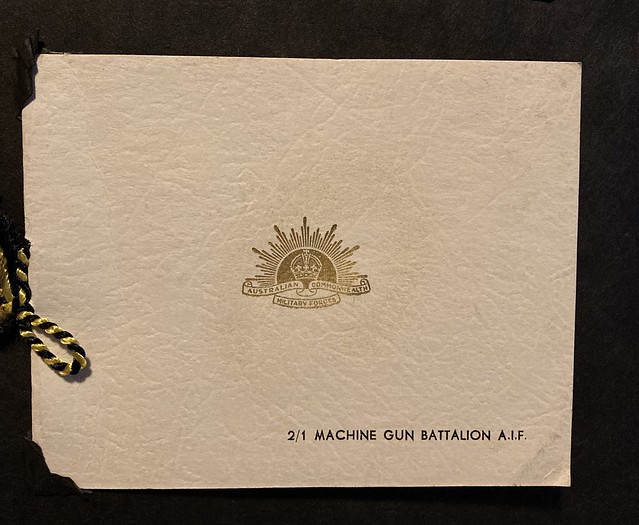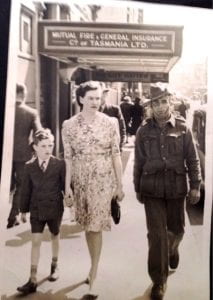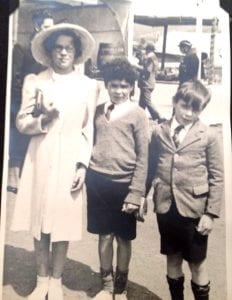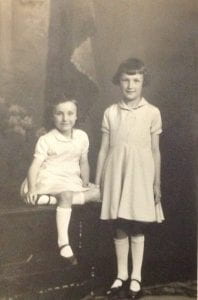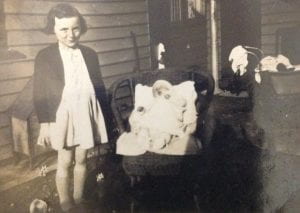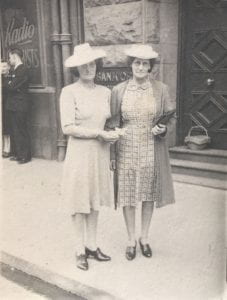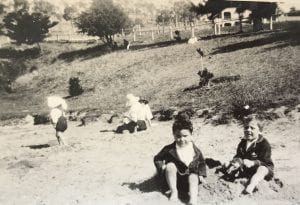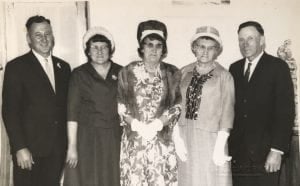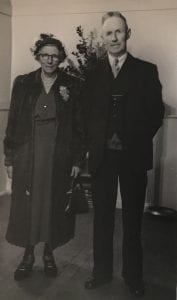In part 1 of Jack’s army career, he was wounded in Crete. He received a gun shot wound to his right buttocks. We now follow him in the Pacific arena.

On 12 March 1942, Jack was heading back to Australia via Adelaide on the USS West Point which had been the America before being refitted. Both behaviour and health of the troops was good on the journey home. They docked in Fremantle on 25 March then on to Outer Harbour in Adelaide on 30th. D company was billeted out in Glenunga. No sooner was he back on Australian soil, than Jack was again AWOL for 10 days with more punishment, fines and forfeiture of pay. April, May and June the company was based at Ingleburn again. Many members had home leave.
On 4 July, D company were on their way to Brisbane then to camp at Peachester. Four days of continuous rain yet the troops still had to improve their camp and build a new road into camp. Each company chose their area to camp and because they had a lack of tents, log huts also had to be built. They had 7 days to get settled in. An assault course was built and platoons would go off on 5-7 day treks where they would travel 70-90 miles.
On 21 July, Jack was evacuated to the MDS (Main Dressing Station) for a consultation. His wounds must have still been painful for Jack as he was admitted to the 2/6th Australian Field Ambulance based in Queensland near Landsborough in July 1942. Three days later, he was discharged back to his unit. It was here in the hinterland of Queensland that the troops did a lot of jungle training ready for their move to Papua/New Guinea.
On 21 August they were moved to Deception Bay where again they had to set up their own camps. Because they were near a beach, troop members enjoyed fishing and swimming. Nothing exciting happened during September according to the unit diaries. To make sure each company had good defences at night, the HQ company formed a commando group and would raid companies and take prisoners. More training during October and November. A and B companies sent north but C and D companies stayed around Deception Bay. They took part in fire control and beach defences. At the end of December, D company were on a march where their communication abilities in the jungle were improving rapidly.
By mid November B company were already in New Guinea and many had lost condition on the voyage over and still needed to acclimate to the weather and conditions. On New Years Day they were at Oro Bay on the east coast of New Guinea. This is near the eastern end of the Kokoda Trail where the Australian and American forces had fought the Japanese on the beach front near Buna Gona.
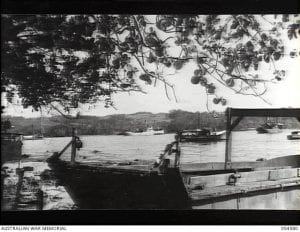
By mid January, A company were at Milne Bay in the southern area of New Guinea. Troops are taking 2 quinine tablets as malaria is rife in the area. A company now at Oro Bay in late March were bombed by Japanese fighters. Both A and B company were now finding Japanese landing on the coast and heading inland to the smaller villages.
In January 1943, Jack and the D company go on night marches, watermanship exercises and field firing exercises. These continue through to 4 May when Jack and his unit were moved to Brisbane where they embarked on the ship Duntroon and headed to Port Moresby via Townsville. In the unit diary, it is mentioned that one person was AWL. Maybe this is Jack, this time for 6 weeks from 3 April until 19 May. They arrived in Port Moresby on 11 May. His court martial was on 10 Jun 1943. He was found guilty and given 3 months field punishment and loss of his ordinary pay. He was tried on the same day as Private Monks also from Tasmania and for the same amount of AWOL. Jack was moved to the New Guinea Forces Field Punishment Centre.
On 17 July, troops were told they would be embarking and heading to the east coast. But in the diaries it is mentioned they are at Boera which is north of Port Moresby. Jack was released from the centre on 27 August 1943. A company in September were at Morobe on the east coast and were often bombed by the Japanese.
Early October, B company were looking at different ways to package the belts for the machine guns for trekking through the jungle. Weather was very hot and some soldiers were fainting at parades in the morning. Every Wednesday afternoon a mobile bath would arrive and each company had 15 minutes for every member to have a bath. They were to supply their own soap and towels.
On 18 October, D company were sent to Dona Dabu for two weeks for jungle training. Included here is a list of what they accomplished over that two weeks.
Unit diary on 2 November mentions A company is returning to Battalion HQ. On 26 November, the place Bootless Inlet is mentioned as being the map where the camp is situated. Each company had a certain area to defend. Looking on a present day map, this is just south east of Port Moresby.
Sundays were always church parade, followed by make and mend and rest day. But on December 18th, the 4th anniversary celebrations involved battalion sports for both individuals and companies. D company won with 38 points. I wonder which sports Jack took part in? He was posted on strength as an original member of the battalion.
Late December, troops were warned about the Guba winds which caused mini cyclones usually during January and February. Orders were given explaining what was expected from the troops. At the end of December the battalion was given orders of moving to the sea with only 24 hours notice.
Back to Australia
On 15 February 1944, the battalion was sent back to Queensland for rest and re-organization. They embarked on the USS Paul Chandler and in total 1195 personnel were on board. The weather was overcast and stormy when they sailed at 1839 hours that evening. Two days later they were navigating the Barrier Reef and on 20 February they anchored at Caloundra.
On 22 February, the South Australian and Tasmanian contingents were sent on 24 days leave. Three days later, the rest of the battalion were based at Tenterfield in New South Wales. By the end of June, everyone had moved again to Petrie which is just north of Brisbane.
On 19 April Jack was granted a week of leave without pay and he headed to Tasmania but failed to report to the L.T.D (Leave and Transit Depot) in Launceston.
The unit voted in the referendum on 19 August. This was the fourteen powers referendum and the federalisation of Aboriginal Affairs.
At the end of August, another move this time to Cairns area. They set up camp at Kairi near Atherton in the tablelands area of Queensland.
Back in Queensland Jack’s medical condition was reassessed in September 1944. He was classified as B2 which meant he was medically fit but had a permanent disability so could only be employed under certain conditions. On 19 October 1944, Jack was moved to 16 APSC for re-allocation. This was Australian Personnel Staging Camp. Jack was then based at 2/1 Australian Base workshops in Queensland.
In July 1945, Jack had been moved from Queensland to Tasmania, and a month later he was back in hospital with acute tonsillitis. This time he was at the 111 Australian General Hospital based at Merton Vale, Campbell Town. Jack was finally discharged on 19 September 1945.
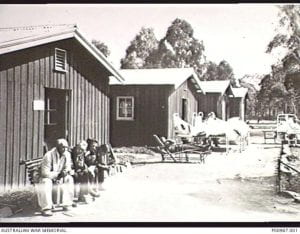
On his discharge papers, it says he served in the AIF continuously for a total of 2031 days of which 974 were in Australia and 852 were overseas. He had 124 days of field punishment which counts as non-effective service. Looking through the unit war diaries, Jack spent approximately six weeks fighting against the enemy throughout the entirety of his World War 2 service.
Jack was awarded the following medals but it is not known where the originals are and who has them as Jack had no children from his two marriages.
- 1939/1945 Star
- Africa Star
- Pacific Star
- War Medal
- Defence Medal
- Australian Service Medal 1939/1945
At some stage in 1946, he had to reapply for his discharge papers as he said they had probably been burnt accidentally.
In August 2000, Gayle Hildyard, his niece mentioned in a letter to the Defence Personnel Service, Army Medals Section, that a nephew was supposed to apply for the medals but it is unknown if these were claimed.

